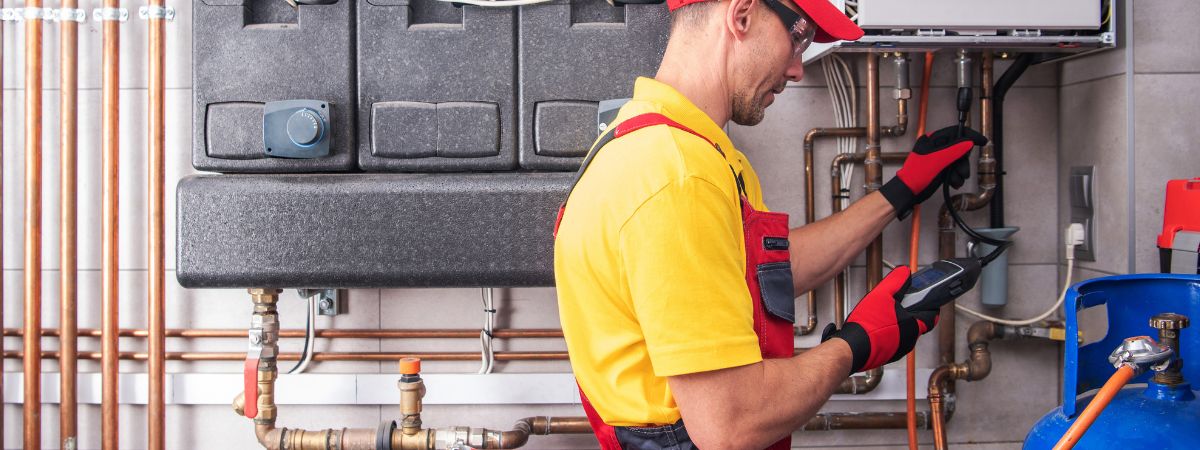One of the most often utilised energy sources in Sydney homes is gas. Natural gas and LPG (liquefied petroleum gas) are useful for a variety of applications. Gas brings convenience; however, it comes with a risk. You must be sure your gas systems are secure. You must be aware that even minor gas leaks can be dangerous, cause explosions, and lead to problems.
Residents are requested to be aware of any gas leaks and respond quickly. The soapy water test is among the easiest and most successful do-it-yourself techniques. In this blog, we have explained how to check gas leaks and respond whenever you detect gas leaks in your home or property. There is also mention of the soapy water method, the easiest method to detect gas leaks.
Why Gas Leak Detection Matters For Your Safety
Households in Sydney mostly rely on natural gas pipes from companies. For instance, Jemena and bottled LPG cylinders are used in many outer suburbs. Despite the system’s safe design, leaks may occur due to wear and tear, loose fittings, or unintentional damage.
- Safety risks: Because gas is so volatile, even a tiny leak can cause an explosion or fire.
- Health issues: Headaches, lightheadedness, nausea, and even worse, carbon monoxide poisoning, can result from prolonged exposure to leaking gas.
- Impact on the environment: The main component of natural gas is methane. It is a greenhouse gas. Methane is far more powerful than carbon dioxide.
- Legal requirements: Landlords, tenants, and homeowners all share responsibility for gas safety, which is governed by NSW Fair Trading rules.
If you know how to conduct the soapy water test, then you can find leaks before they become hazardous.
Common Signs of a Gas Leak
It is important to identify the warning indicators before doing any testing or working on How to Check for a Gas Leak (DIY Soapy Water Test). The following are common ways that gas leaks manifest themselves:
- The rotten egg smell: Utility companies add Mercaptan chemical to natural gas to give it a unique smell.
- Hissing or whistling noises: A discernible sound may be produced when gas escapes from a pipe or cylinder.
- Dead or dying plants next to gas lines: Outdoor gas leaks can choke plants.
- Standing water bubbles: If your home has subterranean gas lines, you may witness bubbling water.
- Physical signs: Gas exposure physical signs include headaches, exhaustion, and dizziness that typically subside upon leaving the house.
It is time to act, starting with a straightforward DIY test if you notice one or more of these.

What Is the Soapy Water Test?
A simple, safe, and efficient method for finding leaks around gas connections is the soapy water test. Applying a solution of soap and water to suspicious places allows you to visually verify whether gas is escaping.
How It Operates
When gas from a leak comes into contact with the soapy solution, bubbles will form. You can calculate the severity of the leak by the size and pace of the bubbles. Professional plumbers usually employ this technique as a first check before performing any diagnostic work.
Supplies You Will Need
You should always make sure that you are working safely and have the necessary equipment before you start.
- Either liquid soap or dishwashing liquid
- Water
- Brush, sponge, or spray bottle
- To clean, use a towel or rag.
Safety Advice
- You should avoid using candles, open flames, or smoking materials close to gas connections.
- You should conduct the test in a place with adequate ventilation.
- Do not do a test if there is a strong gas smell; instead, you can stop the supply.
- Leave right away and contact your gas emergency number or a gas plumber.
Step-by-Step Guide to the DIY Soapy Water Test
There are some steps you may use to DIY a soapy water test for gas leaks.
Prepare the solution
- Mix three parts water with one part dishwashing liquid.
- Stir until it gets a little frothy, but not too thick.
- Transfer the solution into a spray bottle for convenience.
Locate Possible Spots
- You can locate possible locations. Pay attention to flexible hoses, couplings, valves, and connectors.
- You should examine the area surrounding the regulator and the point where the hose attaches to the appliance on bottled LPG cylinders.
- After that, you can verify the obvious connections to heaters, stoves, and hot water systems if using natural gas.
Apply The Solution
- Apply the solution liberally by brushing or spraying the questionable area.
- You should make sure the fitting or connector has a solution on all surfaces.
- Apply the solution to hidden surfaces safely.
Focus On Bubbles
- You can keep an eye out for bubbles.
- You should pay close attention. Almost immediately, bubbles will emerge if gas is leaving.
- While a severe leak may result in massive or fast bubbles, a gradual leak will produce little, persistent bubbles.
Isolate and Mark
- If bubbles form, make a note of where the leak is.
- Use the isolation valve, which is often located on top of the LPG cylinder or next to the natural gas meter, to quickly cut off the gas supply.
- Remember, DIY testing isn’t for fixes; it’s just for detection.
Plan To Fix The Leak
- You can try to fix the leak with pipe tape or a fixing solution for minor leaks.
- If the DIY fix does not work, speak with a Certified Gas Fitter or licensed gas plumber to fix the leak.
- Check for the issue level and change the pipe if required.
According to NSW laws, all gas repairs in Sydney must be performed by a licensed gas fitter.
When to Call Gas Fitters Immediately
While the soapy water test works well for minor suspected leaks, the following situations should be completely avoided.
- Strong gas scent, either indoors or out.
- Several leaks were found.
- A loud hissing of gas coming from an appliance or pipe.
- Rapid deterioration of health symptoms.
- Appliances are not working even when there is no apparent leak.
In case of an emergency, you should report a gas problem immediately. For non-emergencies, you can get in touch with your neighbourhood gas supplier or a skilled plumber.
Gas Safety Regulations in Sydney and NSW
Gas safety is a top priority in Sydney and throughout New South Wales. Important things to be aware of include the fact that only certified gas fitters are permitted to work with.
- Safe gas connections and appliances are a requirement for landlords.
- It is advised to do routine maintenance checks every one to two years, particularly for older systems.
- Compliance is monitored by NSW Fair Trading, and noncompliance may result in fines.
- You should always leave installations and repairs to qualified specialists.
Additional Gas Leak Safety Tips for Households
Here are several precautions to lessen the possibility of gas leaks:
- Frequent Examinations: Every year, you must get your system inspected by a certified gas fitter.
- Replace Old Hoses: If flexible hoses are beginning to show signs of wear, they should be changed every five years.
- Use Gas Detectors: You can install a gas leak detector for extra security. It is advisable to give proper space to gas-containing appliances for good ventilation.
- Turn Off When Away: When departing for prolonged periods of time, turn off gas cylinders.
Conclusion
Gas is a basic requirement in any household. In spite of this, if gas leaks are not treated promptly, they can cause serious hazards. You can start spotting any leaks and safeguarding your family by learning how to do the DIY soapy water test. You must keep in mind that this approach is solely for detection; only qualified specialists should do repairs.
You should contact your neighbourhood emergency gas service or plumber for unknown gas leaks. In any case, safety should always come first. Be vigilant, observe signs, detect leak spots and fix them before any accidents happen.


